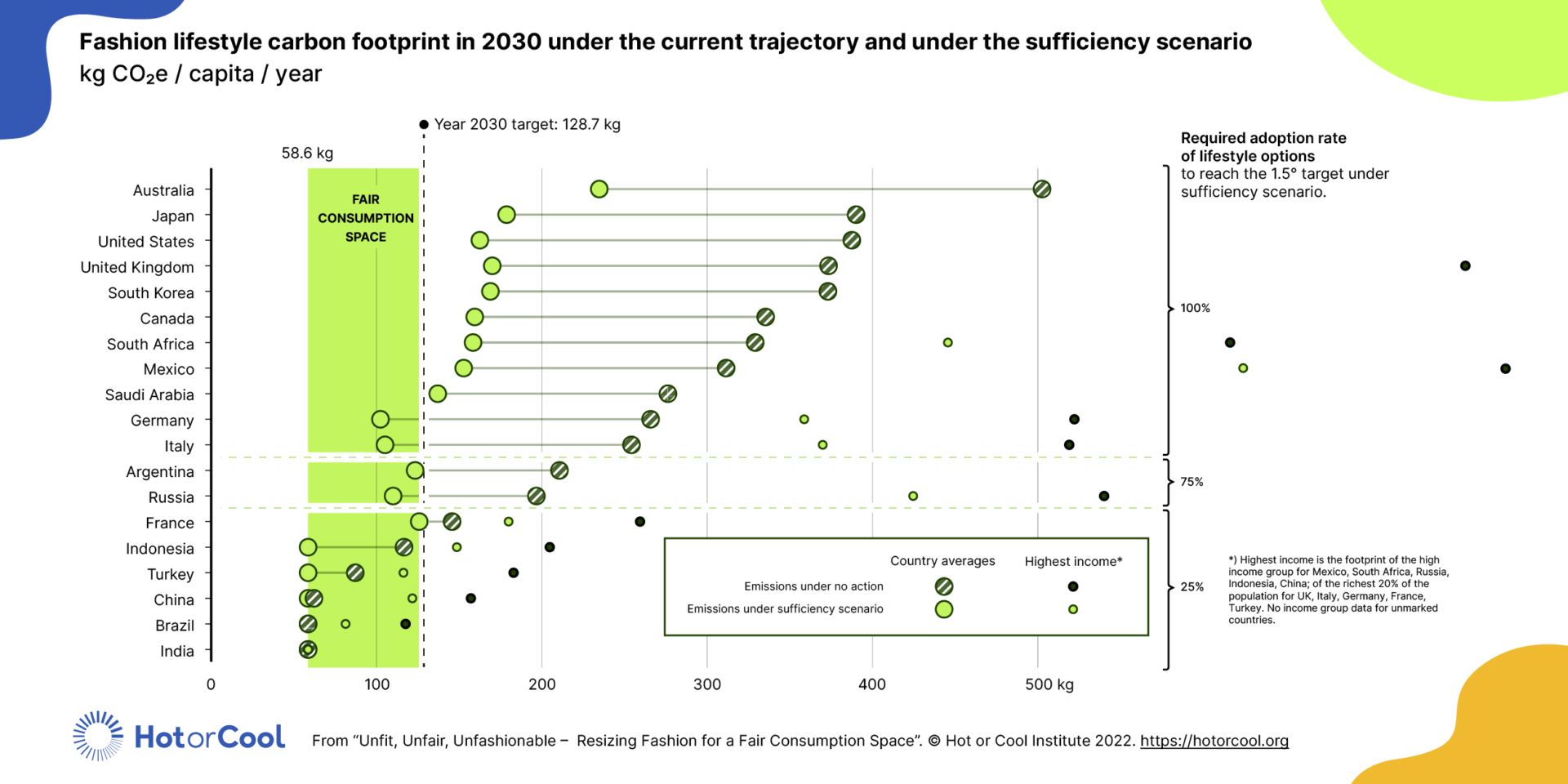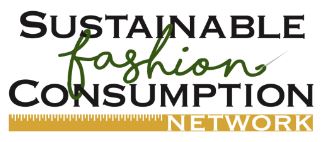Unfit, Unfair, Unfashionable
Update
The most significant Corrections are:
- Numbers in figure 7 were corrected and the present figure shows the average reduction potentials of all lifestyle options for G20, the UK and India
- Numbers on page 32 related to the reduction potentials of lifestyle options were corrected
- Population share for Russia and South Africa was corrected in figure 4
- A few other revisions have been made to the text.
None of the corrections affect the overall messages of the report.
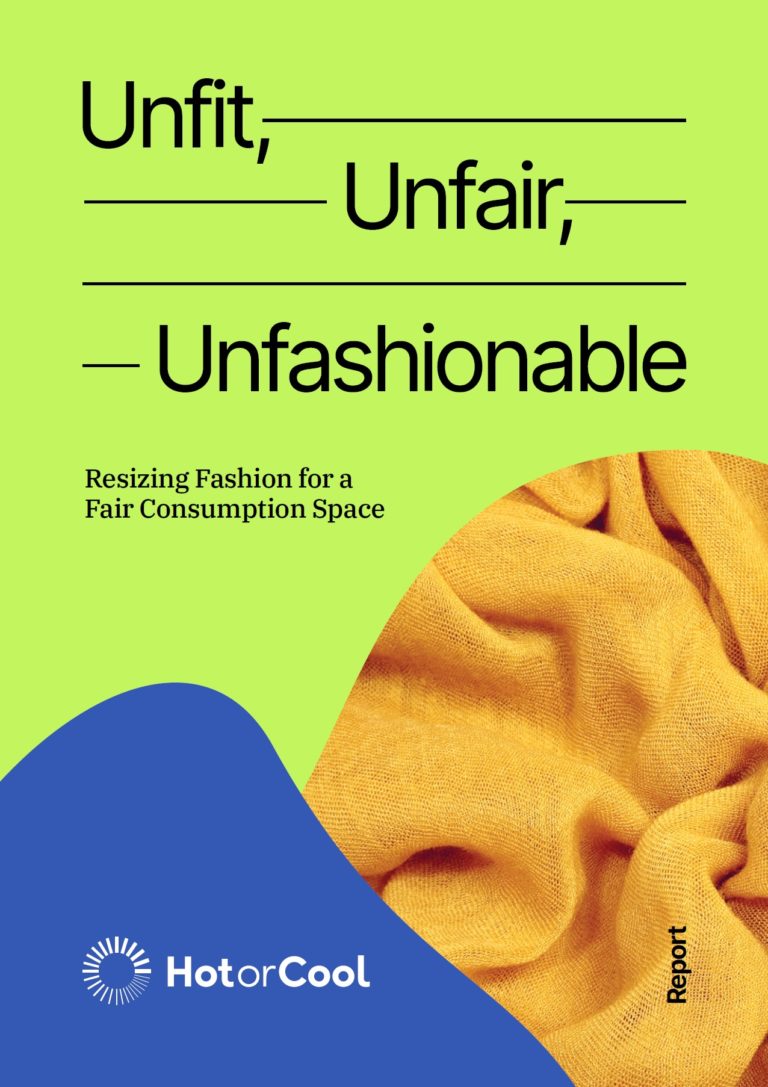
ABOUT THE Report
Current trends in fashion consumption, in particular fast fashion, cannot be maintained if we aim to achieve a fair and just transition to climate neutrality. This report:
- Links changes in fashion lifestyles to measurable impacts on climate change, in line with the 1.5-degree target of the Paris Agreement
- Analyses fashion lifestyle carbon footprints in G20 countries
- Establishes an equity-based footprint target for per capita fashion consumption for 2030
- Reveals the extent of inequalities in carbon emission and levels of fashion consumption, by analysing the carbon footprints of different income groups within the G20 countries
- Extends the concept of a fair consumption space to fashion, discussing fashion sufficiency and making quantitative estimates within the available carbon budget for G20 countries
Key findings
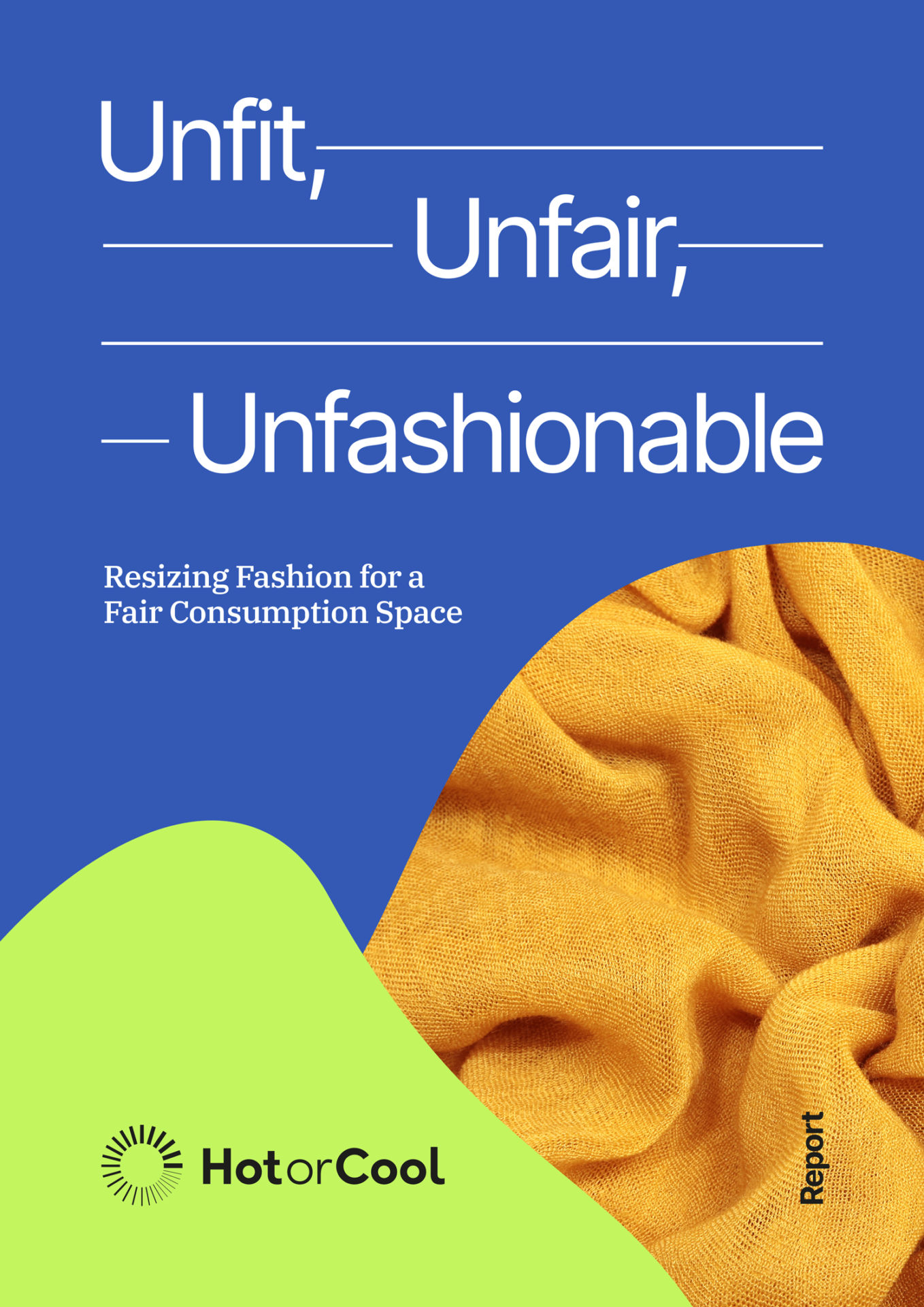
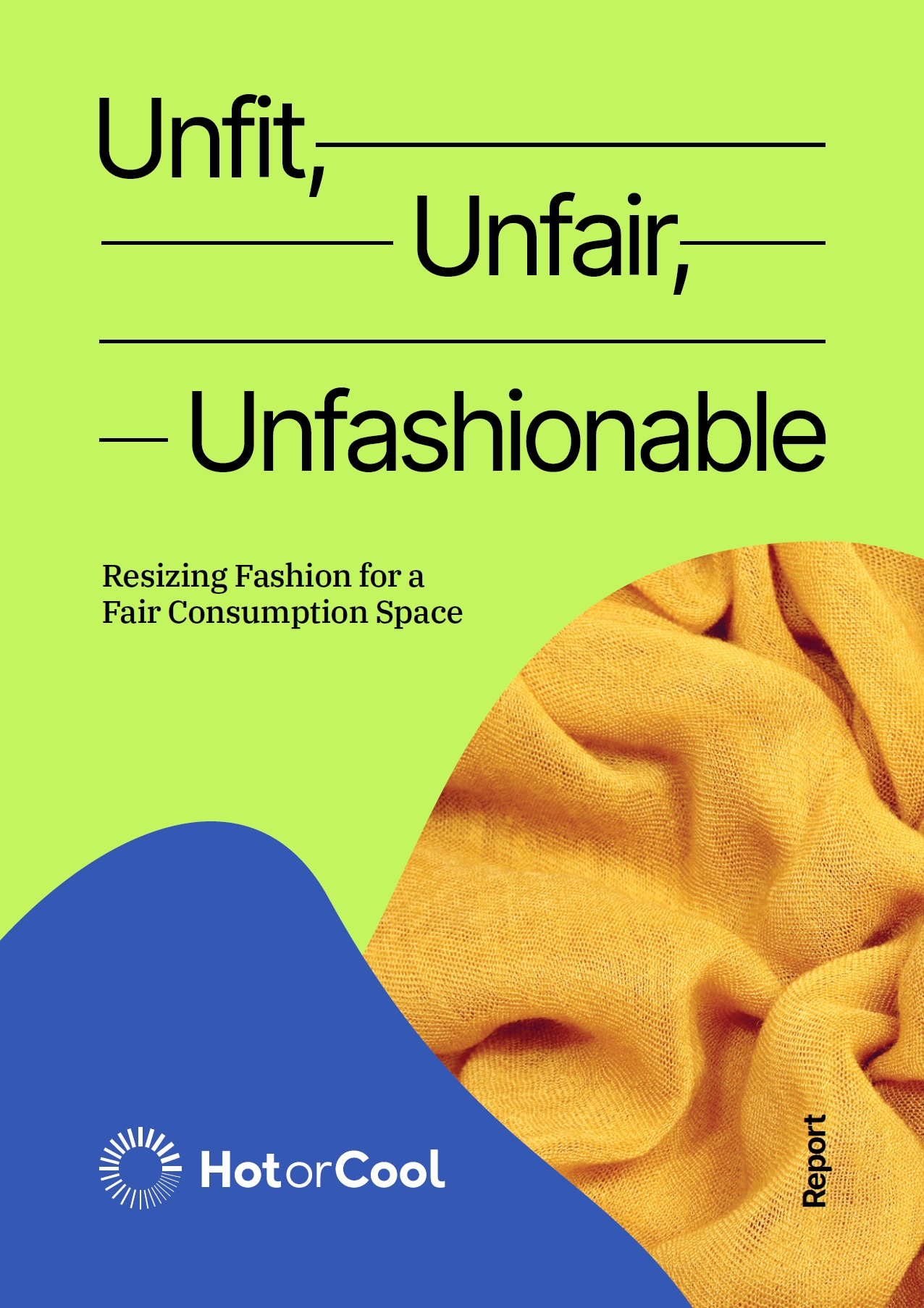
Unfit, Unfair, Unfashionable
Revision note: A previous version of this report had some errors which have now been corrected. The new ISBN number issued for this corrected version is for differentiation. None of the corrections affect the overall messages of the report.
- The fashion sector is on the way to doubling its emissions of climate-damaging gasses by 2030 (UNEP, 2019), and it could uptake over a quarter of the world’s carbon budget by 2050 (carbon budget based on a 2-degree scenario).
- Global emissions must be reduced by 45-55% by 2030 if we are to have a 50% chance to stay below 1.5°-warming (IPCC, 2019)
- Estimates of the fashion industry’s share of global emissions vary, from 2% (WRI 2021), 4.8% (GFA, 2017), 8% (Quantis, 2018), and up to 10% (UNEP). This uncertainty is due to unreliable data, intransparency in the industry, and a scarcity of peer-reviewed scientific research. However, even the most conservative approximations place fashion among the top global carbon polluters and suggest that changing how we produce and consume garments has important implications for the achievement of international climate goals.
- If no action is taken towards decarbonization, the fashion sector will be emitting around 2.7 billion tonnes of CO2e in 2030 (McKinsey & Company & Global Fashion Agenda, 2020)
- Fashion consumption is highly unequal between and within countries.
- While the richest 20% in the UK emit 83% above the 1.5-target, 74% of people in Indonesia live below sufficiency consumption levels of fashion
- Between countries:
- Average carbon footprints from fashion consumption among 14 of the G20 countries exceed the limit of emissions set by the 1.5-degree aspirational target of the Paris Agreement.
- Fashion footprints need to be reduced by 60% on average by 2030 among G20 high-income countries (Australia, Canada, France, Germany, Italy, Japan, Saudi Arabia, South Korea, the UK, and the US)
- Upper-middle-income countries (Argentina, Brazil, China, Mexico, Russia, South Africa, and Turkey) need to reduce their footprints by over 40% by 2030. While these countries are, on average, overshooting the environmental ceiling, a significant share of their population remains below sufficiency.
- In lower-middle-income countries (India and Indonesia), the average carbon footprint of fashion consumption is below the 1.5-degree limit
- Within countries:
- A representative sampling of G20 countries shows that the lowest income quintile is responsible for 6%-11% of the national carbon footprint, the second quintile for 10%-13%, the third quintile for about 17%, the fourth quintile for 24%-26%, and the highest income quintile for 36%-42%.
- The richest 20% need to reduce their footprint of fashion consumption by 83% in the UK, 75% in Italy and Germany, and 50% in France.
- On average, the fashion consumption of the richest 20% causes 20 times higher emissions than that of the poorest 20%. This ratio varies substantially across countries, following levels of income inequality.
Target the Rich for a rapid and Just Transition
- Interventions at the national and international levels would fail if they do not affect consumption by the richest 20%, who, besides their direct impacts, also influence the aspirations of others
- Although the poor often get blamed for buying ‘cheap’ clothes, it is the scale of buying by richer consumers that are key to achieving sustainable fashion
- An equity-based approach to allocating per person carbon budgets for the 1.5-target of the Paris Agreement implies greater reductions in carbon emissions from individuals with higher carbon footprint
Towards a Fair Consumption Space: Buy less, buy better, share and share better
- In the G20, 84% of GHG emissions embodied in fashion consumption occur in upstream production, from fiber cultivation to garment tailoring and finishing.
- Reducing purchases of new clothes is the most effective action to reduce the carbon footprint of fashion consumption, leading to reductions 4 times higher than the next best solution (increasing the use time of garments) and over 3 times higher than what is considered achievable through the current pace of decarbonisation of the fashion industry
- If no other actions are implemented, such as repairing/mending, washing at lower temperatures, or buying second-hand, purchases of new garments should be limited to an average 5 items per year for achieving consumption levels in line with the 1.5-degree target.
- To limit fashion consumption footprint under the 1.5-degree target,purchases of new clothes per capita must be reduced to levels comparable to 2010 in most high-income countries, in addition to implementing circular business models and reducing emissions from fashion upstream production, retail, use, and disposal.
- On average, about 10% of emissions occurring in the disposal phase of garments are linked to second-hand donations and exports. Around 30% of used clothes exported are directly incinerated or landfilled at the destination.
System change, or not enough: only structural change will keep 1.5 alive
- To meet the 1.5-degree target, a system-level change is needed in fashion production and consumption, implying both efficiency improvements in the fashion industry and changes in lifestyles and consumption behaviour.
- Neither of these approaches alone can bring about the required reductions in carbon footprint.
- Most of the existing climate mitigation approaches towards net-zero goals prioritise technology and efficiency improvements while disregarding or downplaying reduction in consumption levels and the adoption of alternative consumption modes
- These results call for urgently addressing reductions in overproduction and overconsumption as the most effective strategies for reducing the carbon footprint of fashion.
Related Posts

1.5-Degree Lifestyles
The 1.5-Degree Lifestyles reports investigate the impacts of consumption and lifestyles on climate change and the potential contributions of lifestyle changes to the 1.5-degree target

Citizens and Artists are Promoting 1.5° Lifestyles by Playing to Their Strengths
Around the world, citizens, artists and collective initiatives are increasingly bringing the need for sustainable lifestyles to the fore. Through the Future Lifestyles Multimedia Contest,

Youth: A driving force for innovative lifestyles under 1.5 degrees
Join the GO4SDGs for the virtual event Youth: A driving force for innovative lifestyles under 1.5 degrees held on the margins of the 2021 YOUNGA Forum.

Policy pathways supporting 1.5 degree lifestyles
Hot or Cool is co-chairing a session at the 20th European Roundtable Sustainable Consumption and Production together with Zoe Institute based on the 1.5-Degree Lifestyles report.
Events



